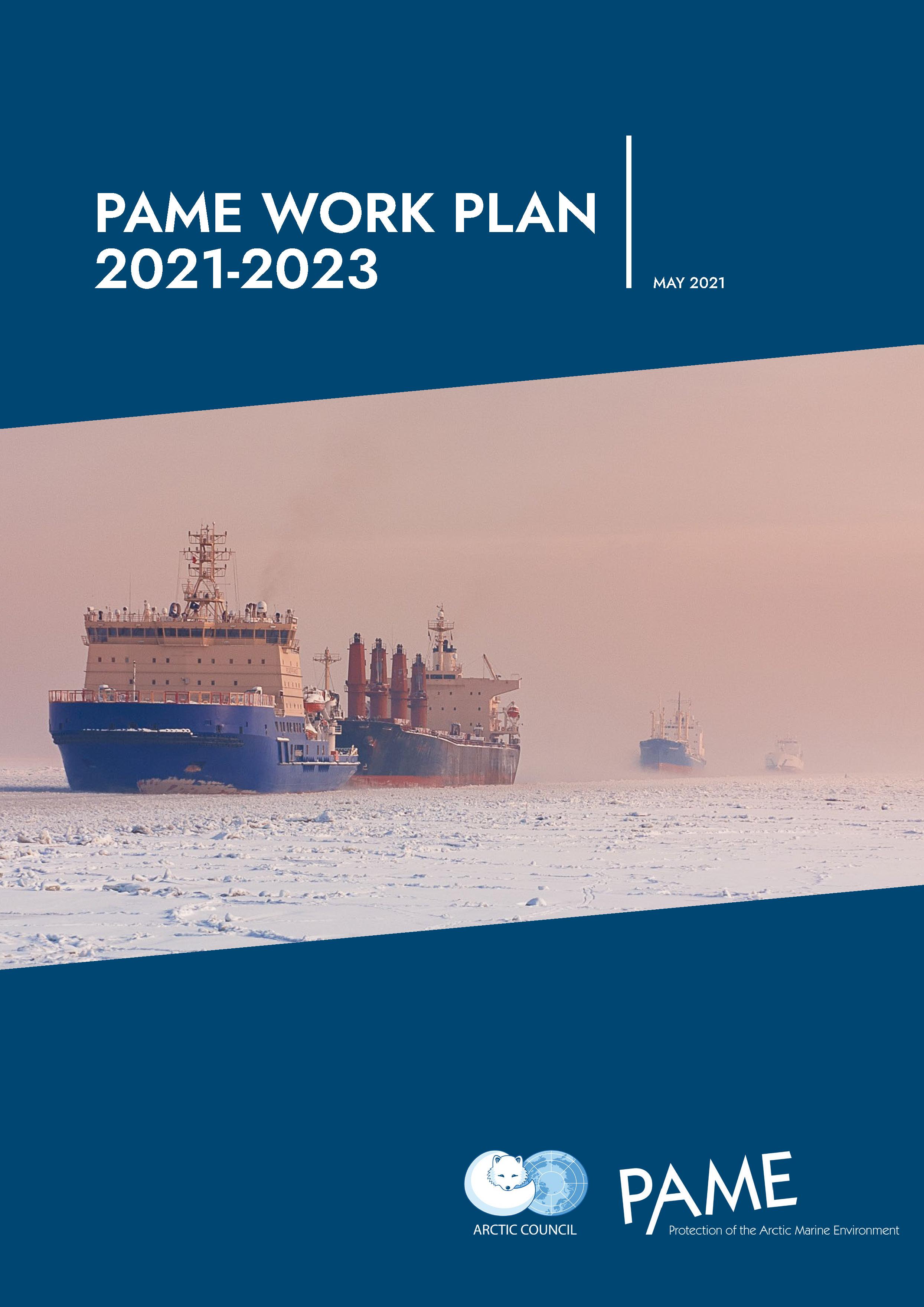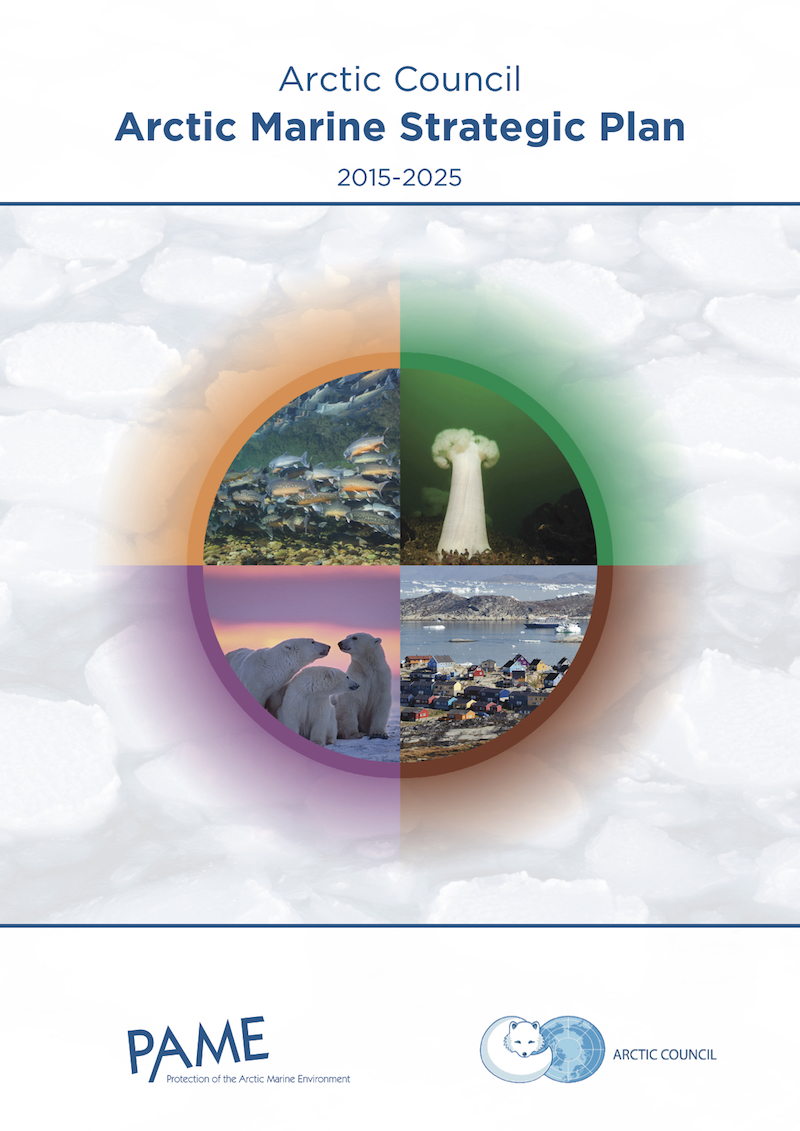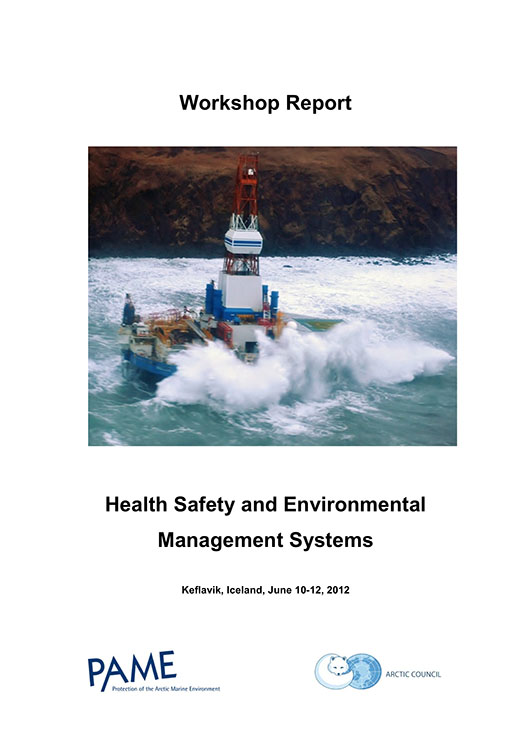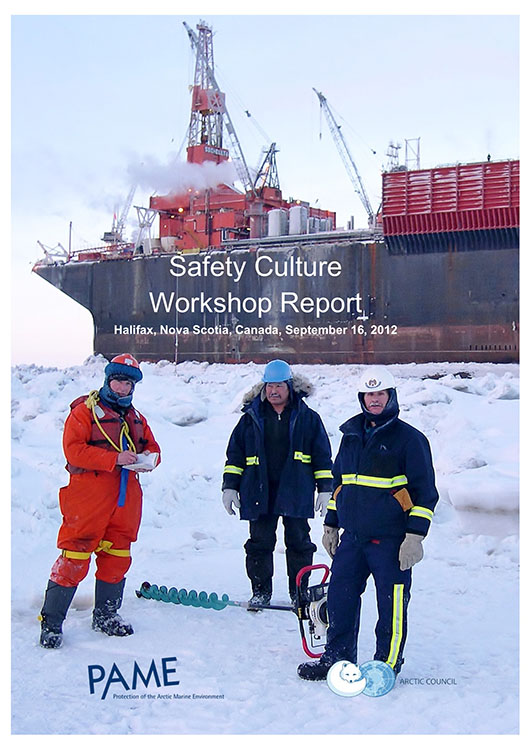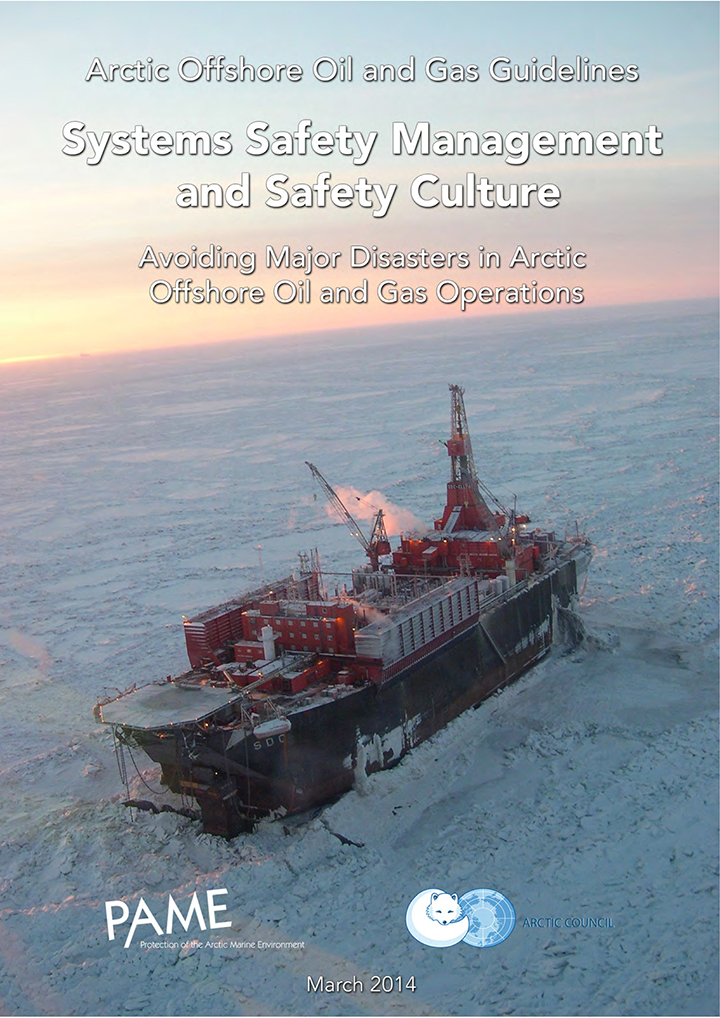 As a follow up to the Arctic Offshore Oil and Gas Guidelines (2009), PAME developed a project and a report on Systems Safety Management and Safety Culture with an the overall objective to "Avoid Major Disasters in Offshore Oil and Gas Operations," in the Arctic.
As a follow up to the Arctic Offshore Oil and Gas Guidelines (2009), PAME developed a project and a report on Systems Safety Management and Safety Culture with an the overall objective to "Avoid Major Disasters in Offshore Oil and Gas Operations," in the Arctic.
This guidance document was intended to provide tools and approaches for reducing the threat of catastrophic effects of major oil and gas related accidents, such as the 2010 Deepwater Horizon accident.
Arctic States have an important role to play in both regulating and influencing the safety of oil and gas operations in the Arctic.
This projects purpose is to provide more targeted guidance on protecting the marine environment from major accidents by improving safety management systems and safety culture in Arctic offshore petroleum operations. To that end, in preparing the current guide, PAME drew on investigations and recommendations from the Deepwater Horizon accident as well as numerous other investigations and hearings.
In developing this project, PAME also benefited from discussions and recommendations from two specific workshops involving international experts from governments, various industries, academia, indigenous peoples organizations, and other Arctic stakeholders.
The report examines the importance of the over-arching issues of Coordination among Regulators and Safety Culture and focuses on some key issues and challenges, as well as some recommended actions or approaches that regulators should pursue for improving system safety when regulating or influencing the safety of offshore oil and gas operations in the Arctic for the following nine (9) Safety Management categories:
|




